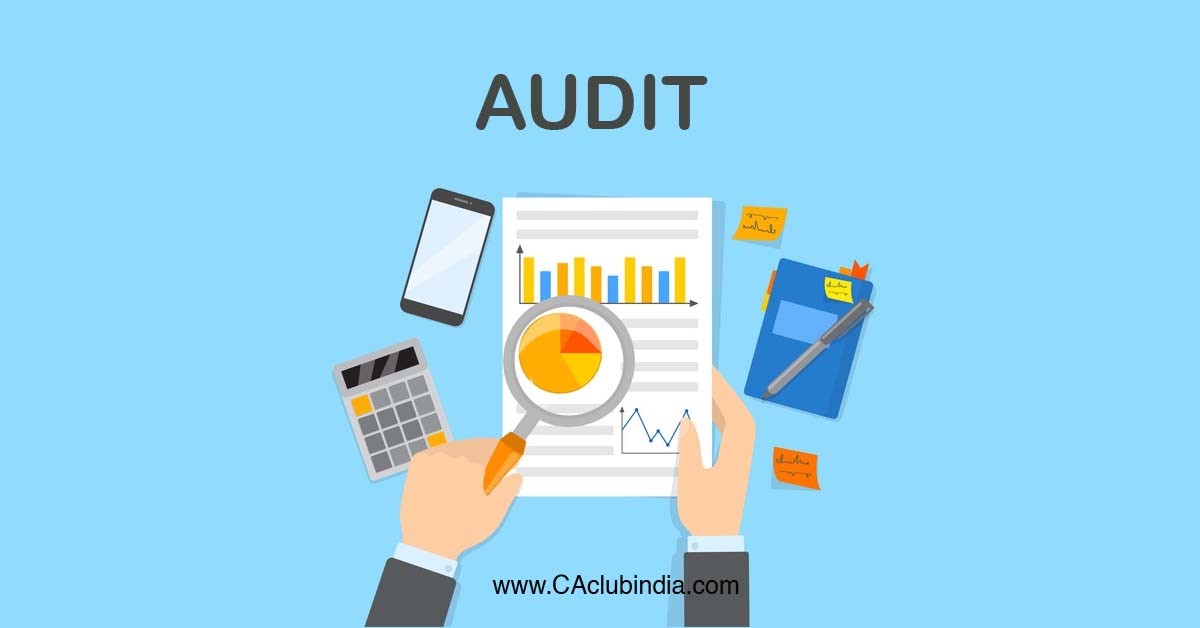In this article author has tried to simplify the procedure to be followed while conducting audit of the Debtors in a brief manner
Debtor represents the amount due to an entity for goods sold or services rendered or in respect of other similar contractual obligations but do not include the amount which are in the nature of loans and advances. In some cases, Debtor may constitute a significant proportion of the total assets of an entity.
The auditors are expected to keep in mind the following factors while auditing the debtors of the entity:

1. Understanding
Whether the basis on which the credit limit of the customers is decided are clearly laid down.
Whether the entity has proper procedures for the preparation of the ageing schedule at regular intervals
Whether the statement of accounts was sent to all debtors at periodic intervals
Whether approval of competent authority is taken for material adjustments such as rebates, commission, allowance, bad debts written off, etc.
2. Verification
Audit assertions
- Existence: The auditor is expected to obtain sufficient appropriate audit evidence about the existence of the outstanding balances at the end of the relevant period
- Completeness: The auditor should ensure that there are no unrecorded debtor balances
- Valuation:The auditor should check the basis for the valuation of the debtors and the need for the creation of the provision for doubtful debts
- Disclosure:The debtors are disclosed and classified as per the applicable financial reporting framework (AS, Ind AS, Schedule III), as per recent amendments – Debtor Ageing & classification of disputed and non-disputed MSME or others is required to be disclosed as part of S-III.
The auditor should check the supporting documents. Verification of subsequent realizations is a widely used procedure even in cases where the direct confirmation process is followed.
Direct Confirmation
The verification of balances by direct confirmation with debtors is theoretically the best method of ascertaining whether the balances are genuine, accurately stated, and undisputed.
Direct confirmation can be of two types -
- Positive: In this, the debtor requested to respond whether or not he/she is in agreement with the balance shown. It is normally used for large account balances or where internal controls are weak)
- Negative: The debtor is requested to respond only if he disagrees with the balance shown. It is suitable for small balances and large numbers or where the auditor has no reason to believe that debtors are unlikely to respond
Special attention should be given to accounts with:
- Old outstanding balances
- Customers having credit balances
- Account for which provision has been made or balances have been written off
- Large outstanding balances
There may be situations (disputed dues) wherein the management requests the auditor not to seek confirmation from certain debtors. In such cases, the auditor should consider whether management has reasonable grounds for such a request.
Analytical review procedures
The following procedures may often be useful for obtaining audit evidence:
- Comparison of Debtors Turnover Ratio
- Comparison of closing balances of debtors with the corresponding figures for the previous year
- Comparison of actual closing balance with corresponding budgeted figures, if available
- Comparison of significant ratios relating to debtors with the industry norms
The following are some of the indications of doubtful and uncollectible debts -
- Terms of credit have been repeatedly ignored
- Stagnation or lack of healthy turnover in the account
- Payments are being received but the balance is continuously increasing in the account
- Payments are quite small in comparison to the outstanding balance
- Old bills are partly paid or pending, but the current bills have been fully paid
- Cheques have been repeatedly dishonored
- The debt is under litigation/arbitration/dispute
- Unwillingness or the inability of the debtor to pay the dues (Insolvency, closure of business, non-traceable)
- The collection is barred by the statute of limitation (Time-barred)
Management Representation Letter
The auditor should obtain from the management a written statement regarding the classification, existence, completeness, and recoverability of the debtors.
Source: Guidance Note on Audit of Debtors, Standard on Auditing
The author can also be reached at ramanujan.ca@gmail.com
Co-authored by: Vinayak Agarwal
Disclaimer: The information provided by the author in the article is for general informational purposes only. All information provided is in the good faith, however we make no representation or warranty of any kind, express or implied, regarding the accuracy, adequacy, validity, reliability, availability or completeness of any information in the article.







 CAclubindia
CAclubindia
